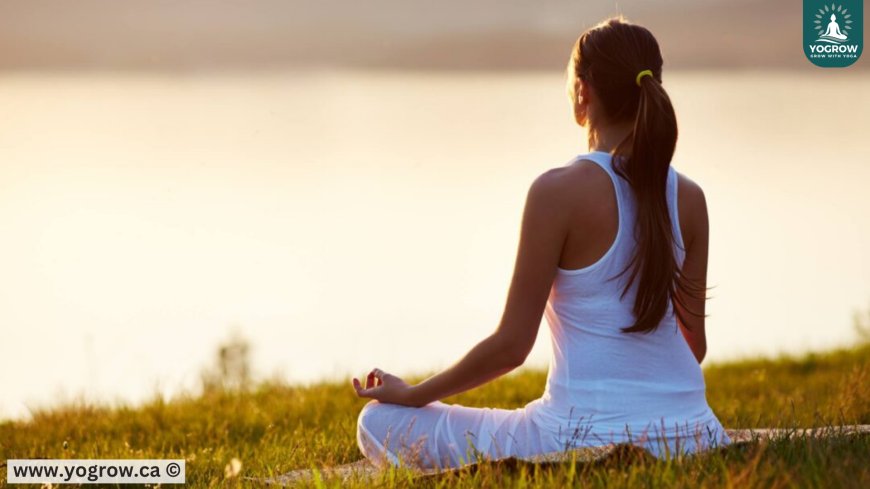Mindfulness Through Yoga: Quiet the World, Hear Yourself | Yogrow
Discover how mindfulness through yoga can transform your life. Learn the benefits and practical steps to embrace mindfulness in every yoga pose.

In today's fast-paced world, finding moments of peace can be a challenge. As noise and distractions surround us, the practice of mindfulness offers a reprieve. One powerful way to cultivate mindfulness is through yoga. The act of focusing on breath, movement, and presence during each pose helps quiet the external world, allowing you to hear yourself more clearly. This article will explore the benefits and significance of practicing mindfulness through yoga, offering you practical steps to embrace this transformative practice.
Benefits of Mindfulness Through Yoga
Mindfulness, when combined with yoga, enhances the physical, mental, and emotional well-being of practitioners. Below are some of the key benefits of practicing mindfulness through every yoga pose.
1. Reduces Stress and Anxiety
Mindfulness helps to regulate stress by encouraging a present-moment focus. During yoga, the mindful awareness of each movement and breath leads to relaxation, which reduces the activation of the stress response. Studies show that mindfulness practices can lower cortisol levels, contributing to a calmer, more balanced life. The steady rhythm of breath and movement offers a natural way to release tension, helping to quiet the mind and reduce anxiety.
For further insights on daily practices that enhance mindful living, check out this blog on 7 Daily Yoga Practices for Mindful Living Beyond the Mat.
2. Enhances Mental Clarity and Focus
Mindfulness through yoga trains your mind to stay present, which improves concentration and mental clarity. As you move through each yoga pose, you practice tuning out distractions and bringing your attention back to your breath. This focused attention strengthens the mind's ability to concentrate, leading to greater productivity and improved problem-solving skills. The more you practice, the easier it becomes to apply this focus outside of your yoga sessions, leading to better decision-making and clarity in everyday life.
3. Improves Emotional Regulation
Yoga serves as a tool for emotional awareness. By connecting to the body and breath, individuals can become more in tune with their emotions. Practicing mindfulness allows you to observe your feelings without judgment, fostering a sense of emotional control. This increased awareness helps prevent emotional overload, allowing for more balanced and thoughtful reactions in challenging situations.
You can dive deeper into this concept with Mindfulness: Getting Started, which provides expert tips on incorporating mindfulness into your life.
4. Enhances Physical Well-being
The practice of mindfulness through yoga not only benefits the mind but also the body. By focusing on alignment, breathing, and movement, yoga helps to strengthen muscles, improve flexibility, and increase overall physical health. Mindful yoga practices also promote better posture, which can reduce chronic pain, especially in the neck, back, and shoulders. With regular practice, your body becomes stronger, more resilient, and in better harmony with the mind.
Practical Steps to Embrace Mindfulness Through Yoga
Now that we’ve explored the benefits of mindfulness through yoga, it’s time to dive into actionable steps you can take to begin this transformative practice. Whether you're new to yoga or a seasoned practitioner, these tips will help you develop a deeper connection to mindfulness in every pose.
1. Start with Breath Awareness
The foundation of mindfulness is breath awareness. Begin each session by focusing on your breath. Take slow, deep breaths and feel the air fill your lungs. Let your breath guide your movement, and keep bringing your attention back to the breath whenever your mind wanders. This simple act of breath awareness can set the tone for the entire practice.
2. Move with Intention
In each pose, move deliberately. Instead of rushing through the sequence, focus on making each transition as smooth and intentional as possible. Notice how your body feels as you move from one pose to another, paying attention to areas of tension or ease. Mindful movement helps cultivate a deeper understanding of your body's needs and limitations.
3. Practice Body Scan Techniques
Before, during, or after your yoga session, take a moment to perform a body scan. Close your eyes, and mentally scan your body from head to toe, noticing any areas of discomfort, tightness, or relaxation. This technique enhances body awareness and deepens the mindfulness experience, helping you stay present during your practice.
4. Incorporate Meditation Postures
After your physical yoga practice, take a few minutes to sit in a comfortable meditation posture. Focus on your breath, or simply observe your thoughts without attachment. This meditation can deepen the mindfulness cultivated in your asanas and provide a sense of peace that lasts beyond your practice.
Mindfulness through yoga is more than just a trend; it’s a lifestyle shift that can bring clarity, calm, and emotional balance into your life. By practicing mindfulness with intention and focus in each pose, you open yourself to a world of benefits that enhance your mental, emotional, and physical health. Ready to dive deeper into mindful living?
Explore more practical tips on mindful yoga by checking out our 7 Daily Yoga Practices for Mindful Living Beyond the Mat. Don’t forget to subscribe for more insights or book your next yoga session with us to continue your journey toward mindfulness.
What's Your Reaction?
 Like
0
Like
0
 Dislike
0
Dislike
0
 Love
0
Love
0
 Funny
0
Funny
0
 Angry
0
Angry
0
 Sad
0
Sad
0
 Wow
0
Wow
0























